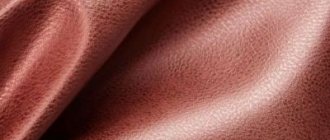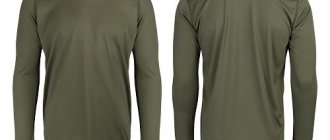Despite the fact that a swimsuit spends most of its life in water, washing it is necessary. But, if you do it carelessly, then beautiful beachwear will become an unsightly rag.
Therefore, so that all the efforts spent when choosing a swimsuit are not in vain, special care is required for a summer item.
Is it possible and how to properly wash a swimsuit (for rhythmic gymnastics, after the sea, etc.) in a washing machine and by hand, we will tell you in the article.
Is it possible?
Swimwear is a delicate item, and rather rough machine washing can damage the fibers of the fabric . In addition, a rapidly rotating drum can stretch the material and ruin the cups.
Some modern machine models have a super-gentle delicate mode, which sometimes washes softer than hand cleaning.
In this case, automatic washing is acceptable; in all other cases, it is better to give preference to hand washing. Bikinis are divided into two types: regular and sports .
The latter are characterized by increased durability of the material, so machine washing on a delicate cycle will not harm. But the material of the former is more picky and is often supplemented with various accessories, but some manufacturers allow automatic washing.
In what cases is machine washing strictly prohibited:
- if the top is made in the likeness of a bra, there are underwires, silicone or gel inserts, and voluminous cups;
- there is embroidery, decorations made of beads, rhinestones, sequins, etc.;
- there are metal inserts or fasteners;
- if the swimsuit is handmade.
Sports swimwear
More durable and made from stronger material, these swimsuits are less susceptible to chlorine in the water. They can be washed in a washing machine on a delicate cycle. The washing powder or liquid must not contain bleaching agents and must be suitable for washing synthetic fabrics.
Swimming sports kits are better able to withstand prolonged exposure to a closed plastic bag and fade less. They have a stricter and simpler cut, which makes washing much easier. Sometimes it’s enough just to rinse them well in running water after each use and let the water drain slightly.
How often?
Swimming clothing must be washed after each use, despite regular contact with water. The fact is that fresh water bodies stain the fabric with silt and underwater vegetation, and the increased level of salt in the sea settles on the fabric and corrodes it.
Pool water soaked in chlorine also has a negative effect on the material . Therefore, after each trip to the shore, you should rinse your swimsuit with running water, and upon arrival home, be sure to wash it.
Washing is necessary even if you only sunbathed without swimming on the beach - skin secretions, creams, lotions and sand also negatively affect the structure of the fabric.
It is better to carry out the first wash immediately after purchase for aesthetic reasons - it is not known how long the swimsuit spent in a dusty warehouse, how often it fell on a dirty floor and how many fittings it went through.
Factors that affect fabric
Modern swimsuits are made from high-quality materials that can easily withstand exposure to sea water and sunlight. However, this item of clothing requires frequent washing and careful care, since with each use it is exposed to aggressive factors, such as sweat, sea salt, various suntan lotions, chlorine in swimming pools or the flora of natural bodies of water.
Sweat
The natural process of sweating intensifies in the hot season, and traces of secretions remain on any clothing adjacent to the body. In addition to the fact that stains spoil the appearance of the product, sweat can cause stretching of the elastic fibers of the swimsuit material. Therefore, it is important to wash your swimsuit even after it has been used not only for swimming, but also for sunbathing.
Salt
When swimming in the sea, you must remember that salt water can cause the bright colors of your swimsuit to fade and fade. Additional load on the fabric is exerted by sand from the bottom or shore of the sea: when it gets on the material, it acts as an abrasive.
Chlorine
Chlorine has an adverse effect on synthetic fabrics, often causing yellowing. Therefore, it is not recommended to use chlorine-containing stain removers for washing a swimsuit, and after swimming in chlorinated pool water, the item must be rinsed.
Tanning products
It's not uncommon for your swimsuit to get stained with sunscreen oils and creams that are used at the beach. For an elastic material, such a proximity is harmful, since it leads to stretching of the fibers.
Silt and mud
The presence of a large amount of algae in a lake, river or sea not only makes swimming not very pleasant, but also negatively affects the color of the swimsuit. Spots of green appear on light-colored items due to exposure to silt and mud; the problem is especially relevant when the pond is in bloom.
Preparation for the process
Before you start washing, you need to do a little magic on your swimsuit.
Sand removal
The clogged sand should also be removed in advance, since during washing it can damage the fabric, clogging even deeper, and, if the washing was automatic, ruin the machine.
They get rid of sand depending on the condition of the product:
- The dry one is carefully stretched and cleaned with a brush and soft bristles.
- The wet one is thoroughly washed under running water, turning it inside out and paying attention to each fold.
This video will show you how to remove sand from a swimsuit:
Cleaning stains
Traces from creams and oils for and from tanning are the most common marks on swimwear. They are usually removed before washing.
- cover the greasy stain on both sides with paper napkins;
- Using an iron heated to no higher than 100°C, carefully iron the covered area;
- prepare a solution - liquid washing gel is mixed with ammonia;
- moisten the sponge and wipe away any remaining dirt.
If there are stains on the swimsuit from food or drinks, then a mixture of salt and ammonia (1:2) is carefully applied to the stains, and then washed off with warm water.
Removing traces of glue
Before washing a new swimsuit for the first time, you need to remove any remaining adhesive, if any. Most often, the glue remains on the swimming trunks after removing the hygienic film.
It can be removed using:
- adhesive tape - a piece of adhesive tape is applied to the remaining glue and sharply torn off;
- laundry soap - apply a generous amount of soap foam to the stained area, leave for 5-7 minutes and remove the rolled-up glue.
Some sites recommend removing the sticky enzyme with gasoline or thinner. You shouldn’t do this - the chance that the swimming trunks will deteriorate is higher than the chance that the glue will be removed.
Color restoration
To ensure that a faded swimsuit can be used again, color restorers are used. The powder is dissolved in water and the item is soaked, after which it is rinsed in clean water. The product will even out the tone of the swimsuit, returning it to a presentable appearance.
What to do if things are stained
Sometimes it happens that during washing something of a different color accidentally gets in and leaves stains on the swimsuit. Is it possible to save the product in such a situation? Most often, quick help to a swimsuit will make it possible to return the original color, especially if the dirt is minor.
Laundry soap
In the case when the housewife, during the washing process or immediately after, noticed that the swimsuit was dyed, the easiest way to fix the problem is with laundry soap. To do this, wash the item and place it in warm water for a while. After a few hours, the swimsuit is washed in the standard cycle.
Soda
If you have baking soda on hand, it will help remove stained marks from the material. The swimsuit should be soaked in a soda solution for 5 hours, then rinsed. To prepare the product, take a tablespoon of powder per liter of water.
Vinegar
You can remove stains from fabric using a weak vinegar solution. The swimsuit is left in the liquid overnight and washed by hand or in a machine in the morning.
Turpentine
Turpentine is used to bring faded cotton fabric back to life. Keep the swimsuit in a mixture of a liter of water and a spoon of product for 3 hours, then wash it in the usual way.
Hydrogen peroxide
You can remove the stain using hydrogen peroxide. For this, a three percent drug, which is sold in pharmacies, is suitable. The affected item must be boiled in a weak peroxide solution for 30 minutes, stirring continuously.
See also
How to wash tulle in a washing machine, rules and recommendations
Ammonia
To return light-colored items to their original color, you can use ammonia. To do this, add one tablespoon of the product to five liters of warm water, place the soiled item in the resulting solution and boil for 5 minutes. Afterwards, rinse with clean water.
Starch
A starch-based mixture is useful for getting rid of fresh stains. To prepare the product, take starch, table salt, citric acid and grated laundry soap in equal proportions. Homemade stain remover is applied to the underside in the evening, and the item is washed in the morning.
Manganese
A potassium permanganate solution works well for stains on a white swimsuit. Powder is added to the water until a pink liquid is obtained, a little washing gel is poured in and the item is kept in the resulting solution for two hours. Afterwards, the fabric needs to be slightly wrinkled and rinsed.
Washing powder
The effectiveness of washing powder can be increased by adding bleach and boiling the item for half an hour. The stains will disappear completely after the material is left in the same liquid until it cools. Then a standard wash is required.
Lemon juice
Both juice squeezed from fresh lemon and citric acid will help deal with stains. Citrus juice is applied directly to small stains for a couple of hours. Citric acid is dissolved in water and the whole thing is soaked in the mixture. Then wash as usual.
Features for different materials
Cleaning a swimsuit depends not only on its type, but also on the fabric from which it was made.
Cotton
Thin cotton swimsuits are often purchased for children or pregnant women.
Such beachwear can be washed in a machine, but the temperature should not exceed 35°C to prevent the material from shrinking.
Read more about the rules for washing cotton products here.
Silk
Silk bikinis can only be washed by hand in thirty degree water, using liquid detergents designed specifically for silk.
Synthetics
Machine washing is acceptable, but hand washing is still preferable . The water temperature should not exceed 30°C, since synthetics are not friendly with hot water. Strong friction, squeezing and stretching will damage the material.
Microfiber
This material should be washed separately from other fabrics to prevent staining. Machine washable on a “delicate” cycle, at a water temperature of no more than 40°C. The detergent should not contain harsh chemicals.
Other useful tips
Buy swimsuits made from the right material: Popular brands offer a range of highly durable swimsuits, usually made from something called PBT (polybutylene terephthalate).
PBT swimsuits are a delicate blend of polyester and PBT. The result is a highly chlorine-resistant fabric that retains its shape and color longer than traditional swimwear. Lycra is also available from manufacturers which provides excellent resistance to chlorine and salt.
Our final tip: be careful how you store your swimsuit after swimming. The tradition of wrapping your swimming trunks in a towel is a very bad habit. Chlorine and other chemicals from the pool will be absorbed into the towel. Use a mesh bag for your wet swimsuit. It will immediately allow your swimsuit to begin air drying.
Take care of your swimsuits and they will last you longer!
15 Jul 2022
Restoring the original appearance
Over time, bright colors of swimsuits fade, and white ones turn yellow or gray, but this is not a reason to despair. It is quite possible to return your bikini to its previous look.
You can restore the color using a stain remover.
- Dip a thick cloth, preferably white, in the product.
- Apply to the faded area for 5-7 minutes.
- Wash in 30 degree water with the addition of a few drops of stain remover.
- Then rinse in a solution of water and vinegar (2:1) to secure the result.
There are special paints for synthetic fabrics, with which you can not only update the color, but also completely change the color. This operation is carried out in accordance with the instructions on the packaging.
How to bleach?
A white swimsuit is more capricious than a colored one, and any dirt and yellow spots look like an eyesore.
How to return the original whiteness:
- using bleach;
- folk remedies.
Rules for using bleach:
As mentioned, these products are not recommended for swimwear, but specialized mild chemicals for delicate items that do not contain chlorine are acceptable.- Dilute a small amount of bleach in water at 30°C.
- Soak the bikini for 10-15 minutes.
- Wash following the hand wash instructions.
- Some bleaches can be used in machine washing, unless otherwise prohibited by the manufacturer.
Use of folk remedies:
- In 1 liter of cool water, mix 5 ml of ammonia and 25 g of baking soda.
- Soak the bikini for several hours.
- Wash in accordance with hand and machine wash instructions.
Boiling swimsuits is strictly prohibited!
Use of special means
Sometimes regular washing gel is not enough to clean up your swimsuit. In this case, special means will come to the rescue.
"Antilin"
The product is designed to restore the color of accidentally dyed fabrics and does its job perfectly. If an item has faded during washing, or if dark items have been soaked into light ones and left stains, Antilin powder will help revive the item, returning the original shade.
Bleaches
It may be necessary to bleach a swimsuit if stains appear on the fabric or if the white material has turned gray or yellowed during use. Vinegar or lemon are suitable safe alternatives for whitening swimsuits. The item is soaked in a solution of vinegar or lemon juice with water overnight, and in the morning it is washed with clean water and dried.
Stain removers
To remove a stain from a swimsuit using a professional product, you need to take a stain remover suitable for delicate fabrics. This product will clean the dirt without harming the material.
How to dry it properly?
The drying process also has its own nuances:
- After the water has been squeezed out a little, the swimsuit is laid out on a terry towel and rolled up.
- Press the towel slightly with your fingers so that excess moisture is absorbed.
- Unfold the structure and place the swimsuit on a dry terry towel, leaving it to dry naturally in a horizontal position.
To prevent the swimsuit from fading and losing elasticity, it is prohibited:
- dry on the radiator or in close proximity to it;
- leave to dry in direct sunlight;
- hang on hangers or a rope so that the bikini does not lose its shape.
You will find a lot of useful information on how to dry things after washing here. You will find maximum useful information about washing clothes and various fabric products here.
General rules of care
In order for a swimsuit to last a long time without losing its appearance, you need to rinse it immediately after each use. It is best to use hand washing or the delicate cycle of a washing machine, if the care instructions on the label allow it.
Laundry detergents should be soft and gentle; if special liquids are not available, regular shampoo can be dissolved in water.
A swimsuit is an essential attribute of a beach holiday. To prevent an item that has lost its color and shape from spoiling the holiday, you need to wash it after each use, using suitable products. This way your swimsuit will remain bright and your mood will remain high.
Share link:











